Statistics Degrees Continue Strong Growth
Steve Pierson, ASA Director of Science Policy
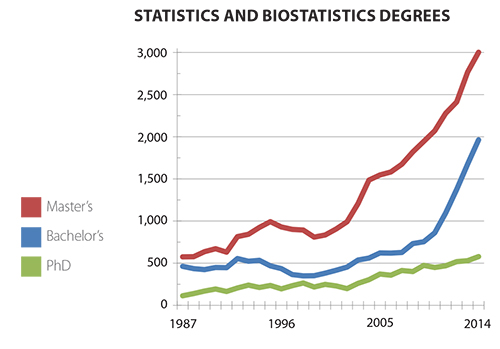
Figure 1: Statistics and biostatistics degrees at the bachelor’s, master’s, and doctoral levels in the United States.Data source: NCES IPEDS.
The 2014 degree data released in late August by the National Center for Education Statistics (NCES) reveal continued strong growth of undergraduate and graduate statistics and biostatistics degrees (Figure 1). Bachelor’s degrees increased 17% over 2013, master’s degrees 8%, and PhDs 9%. The increase is especially dramatic for bachelor’s degrees, with a more than doubling (2.28) from 2010 to 2014 and a quintupling from 2000 to 2014. Master’s degrees increased 45% from 2010 to 2014 and more than tripled from 2000 to 2014; PhDs increased 29% from 2010 to 2014 and more than doubled from 2000 to 2014. Read the data for this chart, which represent NCES CIP Code 27.05 (Statistics) and 26.1102 (Biostatistics).
For biostatistics degrees, for which NCES started providing data specifically in 1992, master’s degrees track the overall increase from 2010–2014 at 47%, but a roughly four-fold increase from the 1990s (Figure 2). Biostatistics PhDs are up 45% since 2010 and more than 400% since the 1990s. The number of undergraduate degrees in biostatistics remains below 30. See the table for this data and for only statistics degrees.
The percentage of women earning statistics degrees in 2014 is between 43% and 49%, with master’s degrees having the highest percentage for the last several years, as shown in Figure 3.
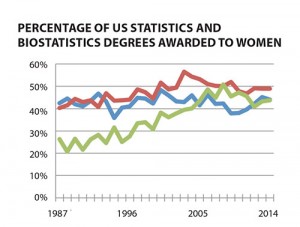
Figure 3: Percentage of statistics and biostatistics degrees awarded to women by degree level for 1987–2014. Data source: NCES IPED.
Biostatistics degrees at the graduate level generally have a higher proportion of women earning the degrees than statistics degrees, as seen in figures 4 and 5.
The September 2014 Amstat News article about the release of the 2013 NCES degree data also had charts of the number of universities granting statistics and biostatistics degrees—graduate and undergraduate—from 2003–2013, a table of the 10 universities granting the most bachelor’s degrees in statistics for 2011–2013, and links to tables of all universities granting such degrees. These data have been updated.

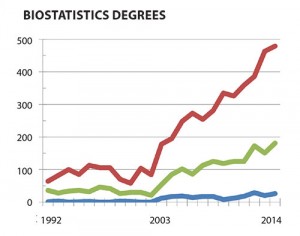
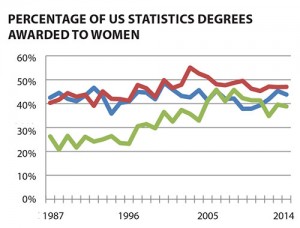
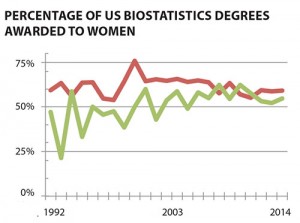

















Deming would say that we need measures of quality.